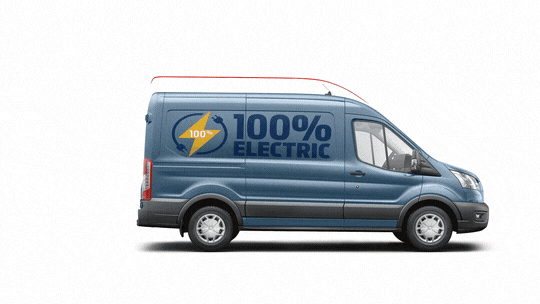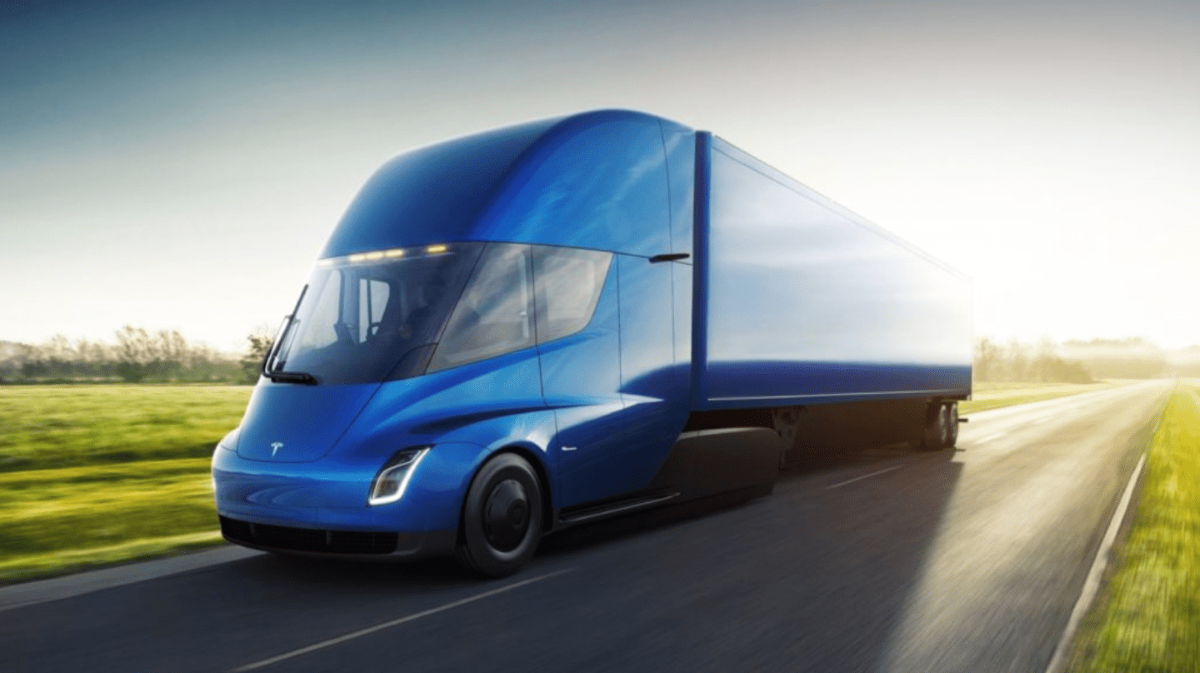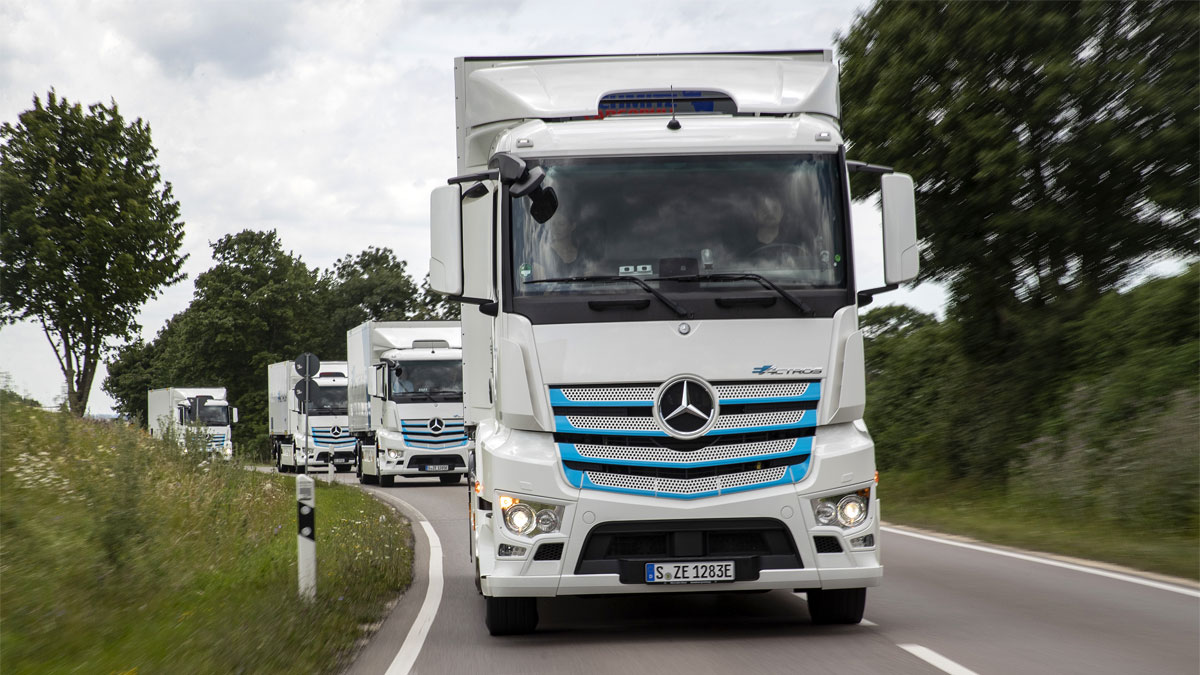Fleet management and planning for electric vehicle deployment.
The time has finally arrived – with the continual shift toward electrification picking up serious traction, the transition to electric vehicle (EV) fleets is underway. With the right implementation strategy, electric vehicles have the power to optimize your fleet’s productivity and take your business to new heights.
Wondering if you should start using electric vehicles in your fleet? In this article, we’re covering the essentials behind the EV market’s explosive growth and sharing the most notable pros and cons of fleet electrification.
Fleet Electrification

You may be wondering, why now? Electric vehicles have been around for years without impacting fleets! Groundbreaking technology in the industry has recently evolved to include electric trucks and vans, thus revolutionizing fleets of any size or operation.
Additional electric vehicle trends sparking the demand for fleet electrification include:
1. Increased Availability and Diversity of EV Models
EVs were previously overlooked by the fleet industry due to the lack of EV models for work trucks. It was especially atypical to see EVs as an option among the secondary markets such as those for used cargo vans.
However, major OEMs such as Ford and GM have committed to producing a wide array of new EV models. The EV market is soon to be flooded with product launches that will include pick-up trucks, cargo vans, and even long-haul vehicles.
2. Reduced Cost of Ownership
Upon their initial rollout, one of the major hurdles to acquiring an EV was the high cost of ownership. In recent years the prices of EVs have gone down as a result of battery cost reduction – and they are continuing to trend downwards.
3. Increased Sustainability Policies and Incentives
The threat of climate change has served as a call for intervention, especially within the automotive industry. Both local and federal governments are beginning to incentivize the adoption of electric vehicles, such as the federal income tax incentive of $7,500 per eligible EV.
Another example includes the state of California’s announcement to ban the sale of new gas cars by 2035, excluding medium- and heavy-duty vehicles such as trucks and construction equipment, which will need to be zero-emission by 2045.
4. Increased Focus on Corporate Social Responsibility
Consumer expectations have shifted to place a strong emphasis on social matters, making it more important than ever to possess definitive commitments to corporate social responsibility. Many companies are diving into the process of reducing their carbon footprint by transitioning their fleets to EVs.
Pros of Using EVs in Your Fleet

There are numerous advantages to using electric vehicles in your fleet, including:
1. Sustainability
By using EVs in your fleet, you will demonstrate your commitment to corporate social responsibility through the reduction of pollution and emissions. Eliminating fuel exhaust from your fleet will in turn reduce greenhouse gas emissions.
2. Lower Fuel Costs
Fuel has traditionally been one of the highest operating costs for fleets. By operating on electricity, the cost to fuel a plug-in vehicle is significantly lower than the cost of fueling with gas or diesel. Running a fleet of EVs will dramatically decrease the total fuel costs.
3. Less Maintenance
EVs require significantly less maintenance and service requirements than vehicles with engines. The reason behind this is simply that electric vehicles have uncomplicated features and fewer moving parts.
One example of this is regenerative braking, in which the vehicle’s kinetic energy is stored in the battery during deceleration to further be used to power the motor. This results in less brake wear and therefore longer-lasting brakes. Moreover, any services that EVs do need are typically cheaper than that of a motor vehicle.
4. Fleet Management Systems
The highly innovative technology of a fleet management system will allow you to maximize your investment through digitally connected vehicles. Features include software to determine the most efficient routes, sensors to monitor cargo and real-time charging status.
You can even view your fleet’s fuel energy use to set carbon emission goals and track when these goals are met.
5. Happier Employees
Commercial fleets operating with EVs have seen improved employee performance and retention. Drivers are getting a smoother, quieter ride without being surrounded by exhaust fumes. One study on EV taxis found that the quieter ride led to improved mood and lower levels of stress.
Cons of Using EVs in Your Fleet
Electric vehicles aren’t for every fleet. Some of the downsides that come with electric fleet vehicles include:
1. Range Constraints

On average, battery electric vehicles (BEVs) have a range between 100 and 300 miles. Ranges can vary based on the efficiency and speed of the driver, heating or cooling uses, as well as the amount of load placed on the vehicle.
Fortunately for long-haul trucking, the Tesla Semi is expected to launch by the end of 2021 and will have a range of up to 500 miles.
2. Remote Areas
Problems may arise if your fleet frequently travels though remote areas with few to no charging stations. Although many countries are taking action to put more EV charging stations in public areas, these far-off areas are likely to be the last to receive this technology.
3. Lack of Used EV Options
The flood of new EV models becoming available on the market will subsequently lead to a growing inventory of first-generation EVs within the used auto market. However, these first-generation vehicles fail to include the options that fleet owners require, such as used cargo vans or commercial work trucks.
4. Higher Upfront Cost
The initial investment in an electric vehicle is higher than gas or diesel vehicles. However, the majority of EVs will require much less maintenance than standard vehicles and will ultimately save you money in the long run.
Questions to Ask Before Fleet EV Implementation
To ensure a smooth transition to electric vehicles, be sure to make these key considerations:
- Is the adaptation to EVs feasible for my fleet vehicles?
- Are there any tax credits or incentives that my fleet could benefit from?
- Are the EVs able to be upfitted to meet my fleet’s needs?
- Does my fleet partner work with a wide array of OEMs to get me the models that my fleet requires?
- Where will my employees charge their vehicles? Am I able to install on-site charging?
- Does my service network have EV-trained technicians?
- Are there any opportunities for fleet remarketing?
The buzz around electric vehicles is more than just a call to improve the environment – it is the way of the future. With careful research and planning, making the switch to using EVs in your fleet will prove to be a valuable asset. Fleets that plan for an electric future today are putting themselves in a position to fuel their future successes.
Photos and sketches copyright the respective manufacturers: Daimler, Workhorse, Ford, and Tesla.

